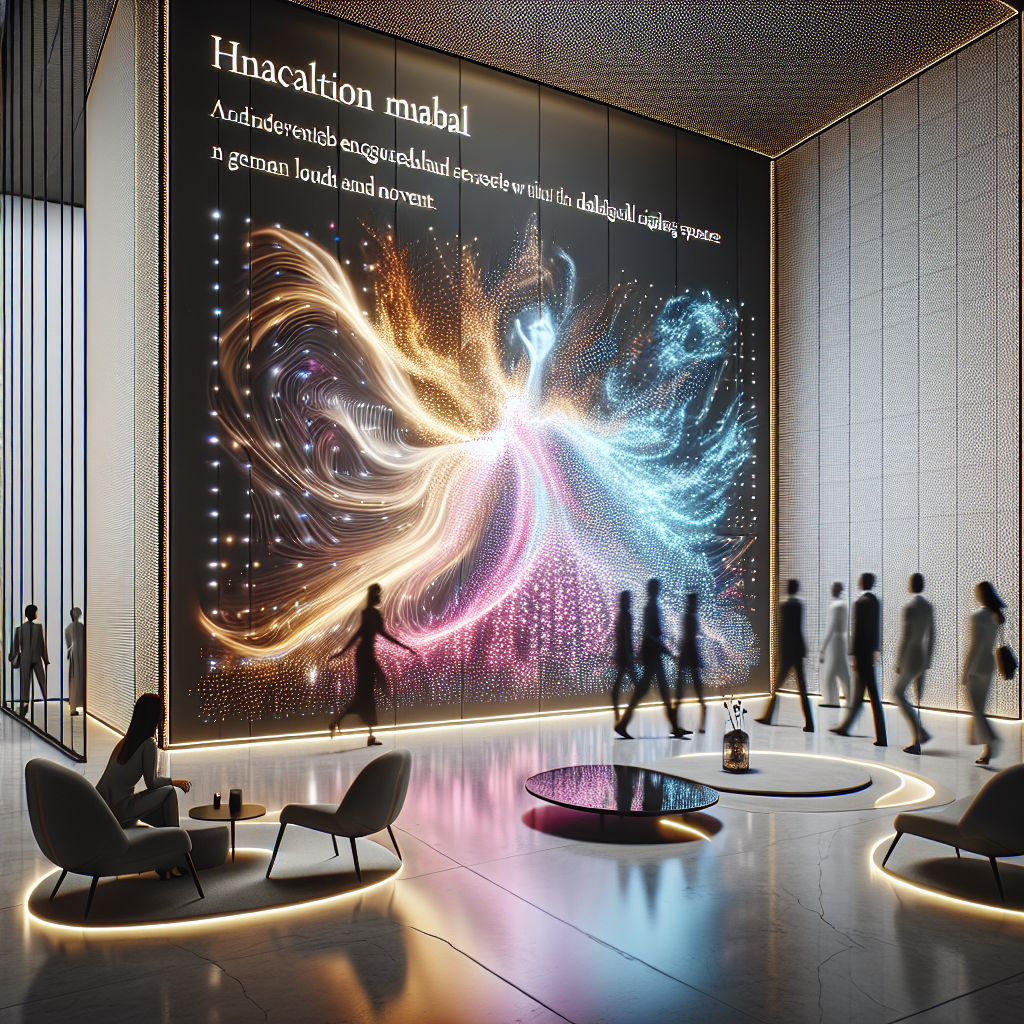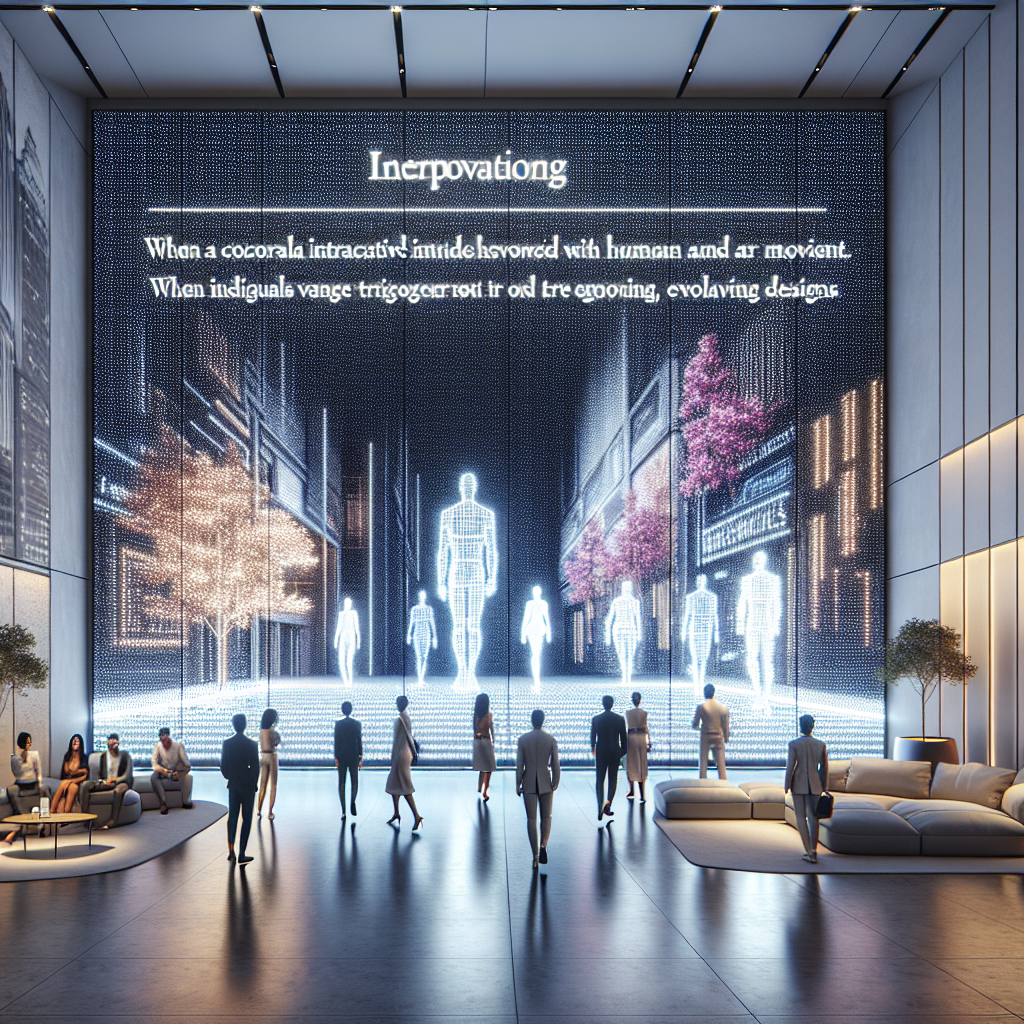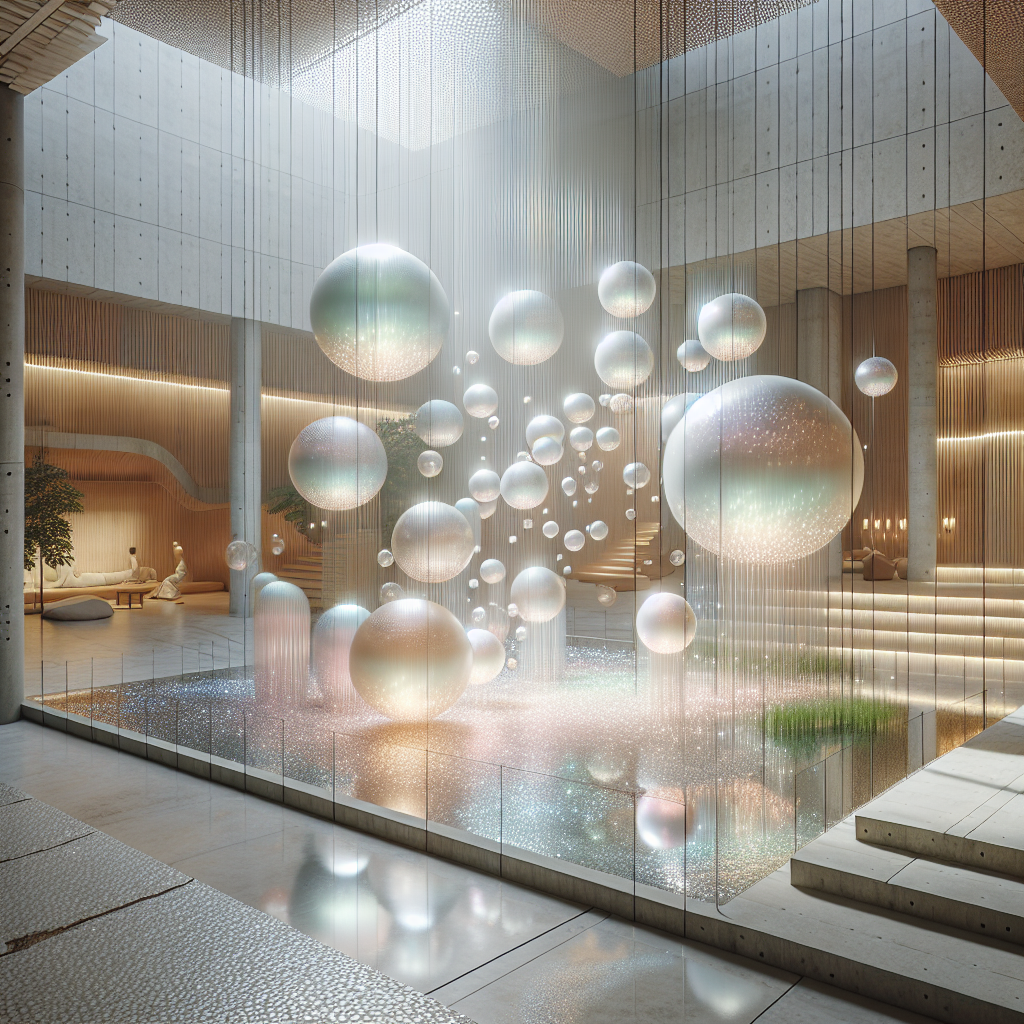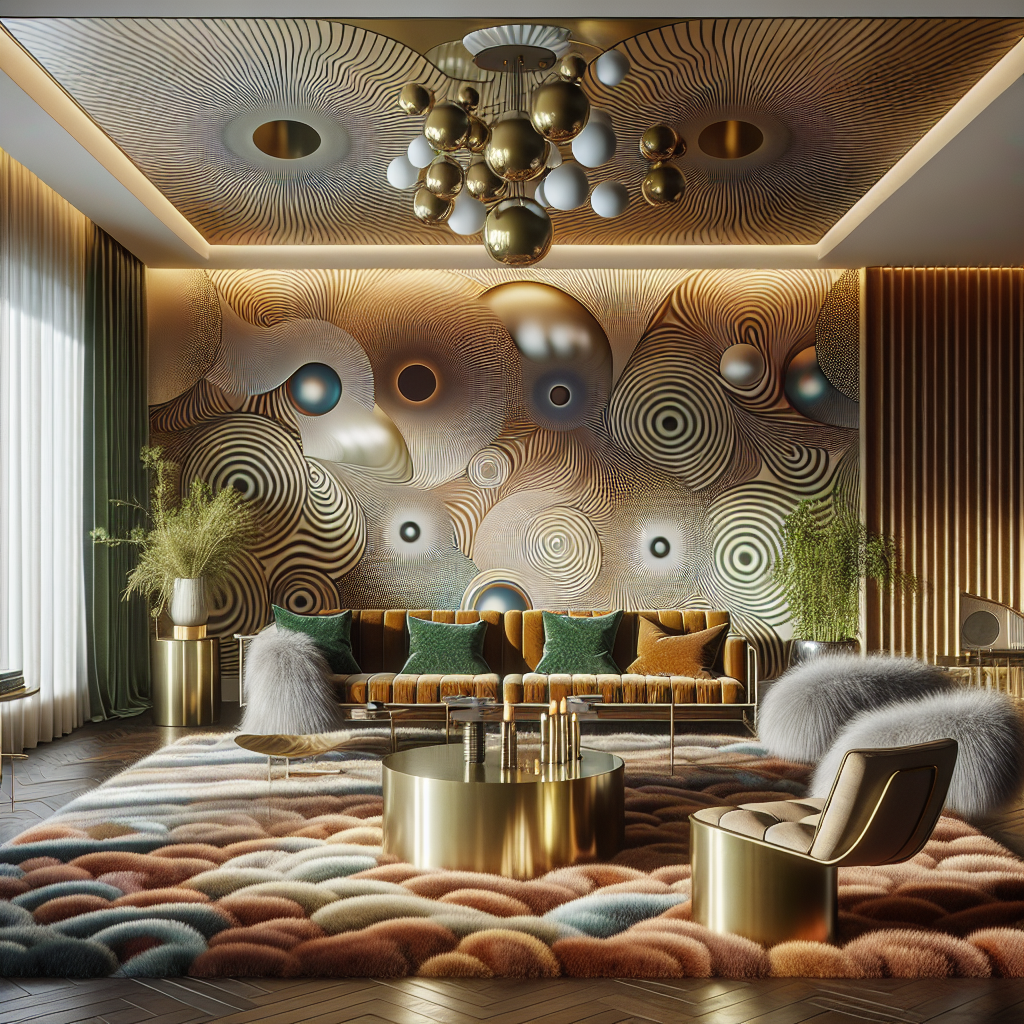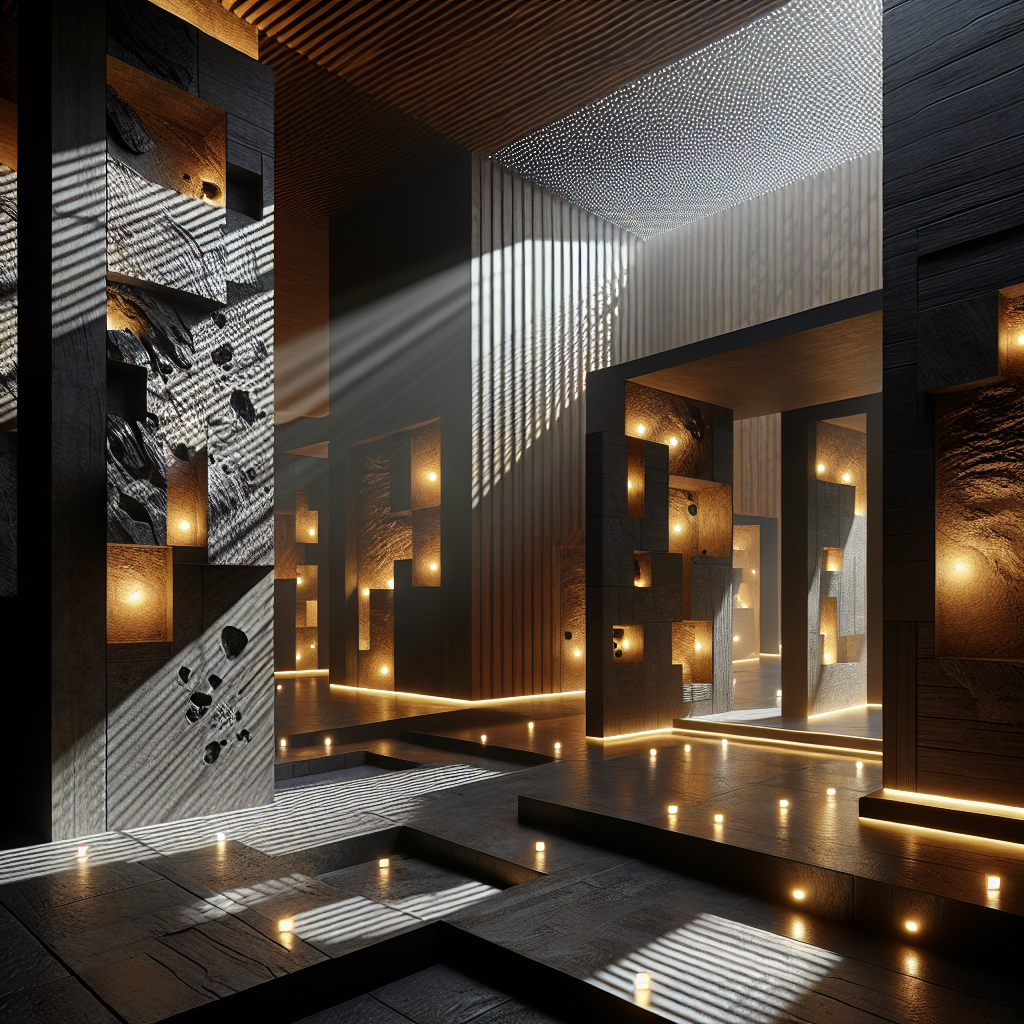Murals as motion sensors: interactive walls that glow upon contact
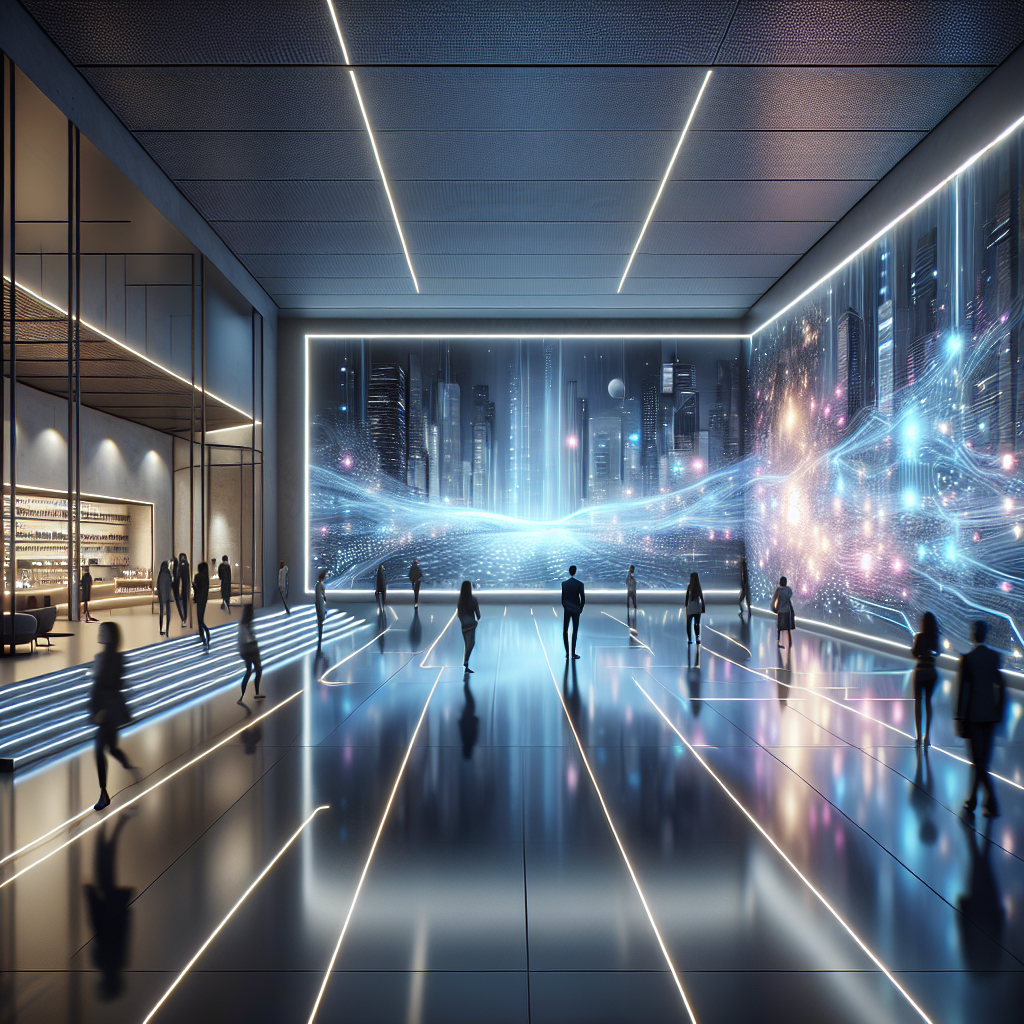
Murals as Motion Sensors: Interactive Walls That Glow Upon Contact
In the ever-evolving landscape of architecture and interior design, technology has become a pivotal player, reshaping the way we experience spaces. Among the latest innovations captivating the design community are interactive murals—walls that respond to human touch and movement by illuminating in mesmerizing patterns. This fusion of art, technology, and architecture not only elevates aesthetic appeal but also enhances human interaction within built environments. As we delve deeper into this fascinating trend, we explore how these glowing murals are transforming interiors, enriching user experiences, and redefining spatial dynamics.
The Art of Interaction: Merging Murals with Motion Sensor Technology
Traditionally, murals have served as static visual statements, narrating stories or evoking emotions through painted imagery. However, contemporary designers are now pushing boundaries by integrating motion sensor technology directly into mural designs. Utilizing advanced capacitive sensing, infrared sensors, and responsive LED lighting systems, these interactive murals detect proximity, touch, and gestures, responding with dynamic illumination patterns. The result is a vibrant, ever-changing canvas that engages users in an immersive, tactile dialogue with their surroundings.
One notable example is the “Lumina Wall” installation at Tokyo’s Mori Art Museum, where visitors’ movements trigger cascading waves of soft, pulsating lights, creating a poetic interplay between human presence and architectural space. Such installations not only captivate the imagination but also foster deeper emotional connections, making interiors more inviting and memorable.
Enhancing Human-Centric Design through Interactive Murals
The integration of interactive murals aligns seamlessly with the principles of biophilic design, which emphasizes creating environments that resonate with human senses and well-being. These glowing murals stimulate visual and tactile senses, promoting mindfulness and emotional engagement. For instance, in healthcare settings, interactive murals have been shown to reduce anxiety and stress among patients, providing therapeutic distractions through gentle, responsive illumination.
Moreover, educational institutions are embracing this technology to enhance learning environments. At the Copenhagen International School, a corridor adorned with interactive murals encourages playful exploration, fostering creativity and curiosity among students. The walls illuminate in response to touch, creating a dynamic, sensory-rich experience that complements traditional educational methods.
Sustainability and Energy Efficiency: A Harmonious Balance
While interactive murals introduce technological sophistication, designers are mindful of sustainability and energy efficiency. Modern installations often employ low-energy LED systems and smart sensors that activate lighting only upon interaction, significantly reducing energy consumption. Additionally, some designers are experimenting with solar-powered solutions, harnessing renewable energy to power these captivating installations, aligning with global efforts toward net-zero architecture.
In Singapore’s Marina One complex, interactive murals integrated with photovoltaic cells illuminate public spaces at night, drawing energy from sunlight absorbed during the day. This innovative approach exemplifies how interactive design can coexist harmoniously with environmental responsibility, setting a precedent for future sustainable projects.
Case Study: The Interactive Murals of Amsterdam’s Schiphol Airport
Amsterdam’s Schiphol Airport recently unveiled an ambitious interactive mural project in its departure lounges, designed by renowned Dutch design studio Roosegaarde. The installation, titled “Touch of Light,” features expansive walls embedded with thousands of tiny LEDs and motion sensors. As travelers pass by or touch the walls, luminous patterns ripple outward, mimicking the gentle movement of water. This installation not only enhances aesthetic appeal but also provides a calming, engaging experience for travelers navigating the bustling airport environment.
The success of Schiphol’s interactive murals underscores the potential of this technology in high-traffic public spaces, transforming mundane transit areas into memorable, sensory-rich environments. It also highlights the importance of user-centered design, where interactive elements serve both functional and emotional purposes, enriching the overall spatial experience.
Design Considerations and Implementation Challenges
While interactive murals offer immense potential, designers must navigate several considerations to ensure successful implementation. Material selection, sensor accuracy, and durability are critical factors, especially in high-traffic or outdoor environments. Designers often opt for robust, weather-resistant materials such as tempered glass or acrylic panels to protect sensitive electronic components.
Furthermore, achieving seamless integration between technology and aesthetics requires meticulous planning and collaboration among multidisciplinary teams, including artists, architects, engineers, and technologists. As highlighted in interactive installations, balancing visual artistry with technological functionality is paramount to creating impactful, enduring designs.
The Future of Interactive Murals: Beyond Aesthetics
Looking ahead, the evolution of interactive murals promises even greater possibilities. Emerging technologies such as augmented reality (AR) and artificial intelligence (AI) are poised to enhance interactivity further, enabling murals to adapt dynamically to user preferences and environmental conditions. Imagine walls that not only glow upon contact but also recognize individual users, offering personalized lighting patterns or informative content tailored to specific interactions.
Moreover, as urban spaces become increasingly digitized, interactive murals could play pivotal roles in smart city initiatives, providing real-time information, wayfinding assistance, or even environmental monitoring through embedded sensors. This integration aligns with broader trends explored in futuristic city design, where technology and architecture converge to create responsive, intelligent urban environments.
Conclusion: Illuminating the Path Forward
Interactive murals represent a compelling intersection of art, technology, and architecture, transforming static walls into dynamic, responsive canvases that enrich human experiences. As designers continue to explore and refine this innovative approach, we can anticipate a future where our built environments become increasingly interactive, sustainable, and emotionally resonant.
From healthcare facilities and educational institutions to airports and urban landscapes, the potential applications of interactive murals are vast and varied. By embracing this technology thoughtfully and creatively, architects and designers have the opportunity to redefine spatial interactions, fostering deeper connections between people and the spaces they inhabit.
Ultimately, interactive murals remind us that architecture and design are not merely about structures and aesthetics but about creating meaningful, human-centric experiences that resonate deeply with our senses and emotions. As we continue to explore this luminous frontier, the possibilities for innovation and inspiration are boundless.
For further reading on innovative design solutions, explore our articles on vertical farming and responsive design.

